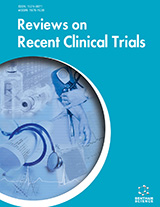Abstract
Monoclonal antibodies (mAbs) are produced by clones of a unique parent cell which has monovalent affinity and can bind to the same epitope. The chronological breakthrough in mAbs clinical utilization was in 1975, when it becomes possible to produce mAbs to known antigens and immortalize the cell lines. However, the clinical usefulness of mAbs was hampered for many years, basically because of their immunogenicity due to the murine origin. This situation lasted until 1988 when a technique to humanize mAbs was defined. Nuclear Medicine researchers were very quick to gathered the opportunity provided by the development of mAbs. The first papers reporting the preclinical use of radiolabelled mAbs date the early 80’s soon followed by the first pivotal use in humans. However, mAbs did not gain a wide clinical use for several reasons connected to the chemistry and biochemistry of radiolabelled mAbs the emergence of clinical 18F-FDG PET. However, the “magic bullet” concept has resisted in the cultural background of Nuclear Medicine physicians for almost twenty years, and has regained importance with the development of engineered mAbs. Herein we present a selected review of preclinical and clinical studies of PET/CT with mAbs in gastrointestinal malignancies.
Keywords: ImmunoPET, Gastrointestinal tract neoplasms, Liver neoplasms, Pancreatic neoplasms.





























